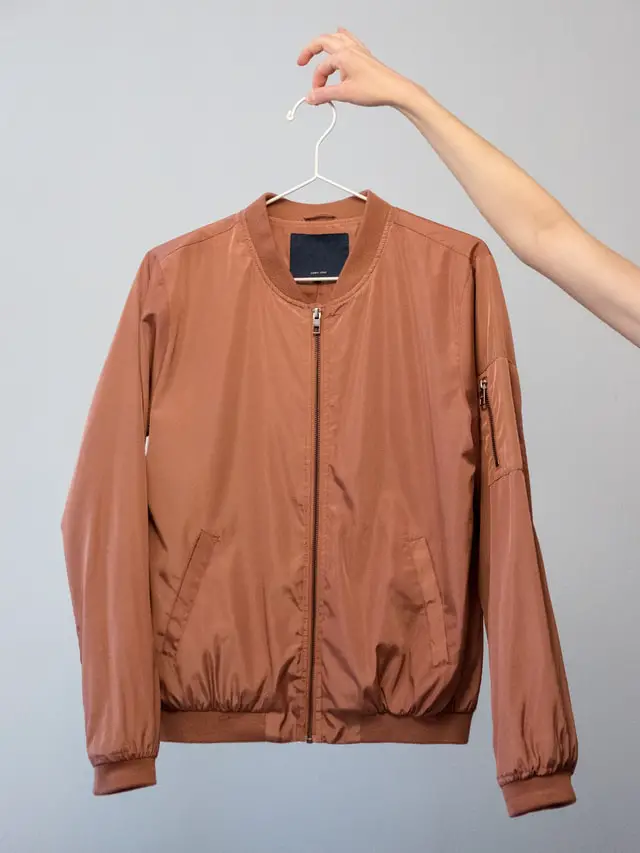The ease of washing cotton material is one of the reasons why it is so popular in the apparel industry!
When you have dirty cotton shirts and jackets to wash, the procedure to do so is simple and straightforward.
Get a reliable detergent, set the wash water to any temperature of your choice, opt for the cotton or normal wash cycle, choose the extra rinse cycle, then run a complete wash cycle with the clothes in the wash tub. After cleaning is over, remove the clothes from the washer and put them in the dryer under medium heat!
In subsequent paragraphs and headings, we’ll discuss (in details) how to properly take care of and wash your cotton shirts and jackets.
Pay attention to the care label
The most important thing when it comes to the care and maintenance of fabrics is to make sure you’re following the instructions that are laid out on the fabric care label.
It’s not difficult to find the fabric, it’s usually stitched to the seam on the neck region or by the side of a cloth from the inside.
The fabric care label is a piece of precious information supplied by the producer or manufacturer of a certain garment that will tell you the exact technique of washing, drying and maintaining a certain type of fabric. It will also inform you of the type of fiber that makes up your fabric, whether there’s a blend, and the products that cannot be used on it.
When you’re following these instructions in the care label, you have a pretty good chance of keeping your fabric well and in good condition for a long period of time.
Use the washer
Because cotton has long polymers that are arranged in a pretty silk fashion, cotton is very strong. And it gets even stronger when wet because the polymers rearrange into a much better configuration. This is the reason why cotton can be washed in the washing machine using almost any kind of settings without running into problems.
That being said, we must not forget the type of cotton garment we’re dealing with here, shirts and jackets. Shirts, in particular, do not have issues being put in the washing machine on heavy duty settings. Jackets on the other hand, are sometimes structured, and so too much agitation will destroy their structure, which is why jackets, especially those that are structured, should always be washed using the gentlest cycle possible.
The washer configurations
So now that we know we can use the washing machine to wash cotton shirts and jackets, what settings do we use for best results?
As mentioned earlier, opt for gentle to moderate wash cycles for jackets. You can use any cycle of your cotton shirts if there’s no specific warning issued out on the label, But it’s still good practice to opt for moderate cycles or gentle cycles.
Another cycle that can benefit cotton clothes is the permanent press cycle. The permanent press cycle has a lower spin speed compared to the heavy duty cycle but at the same time has a faster speed compared to the low cycle.
However, the permanent press cycle is designed to get any wrinkles and creases that can form during washing. Because cotton is an inelastic fiber, it holds onto wrinkles and creases more than most other fibers. And so putting it in the permanent press cycle would greatly benefit it.
Water temperature
When it comes to the water temperature to wash cotton clothes, you also have the liberty to use cold, warm and even hot water.
Cold water of course is the gentlest of all the temperatures, and it would not cause damage to your fibers in the long run. Hot water on the other hand should be used with caution because consistent usage on fabric, no matter how tough it is, would eventually cause a breakdown.
So the golden rule is to always use cold or warm water to wash cotton shirts and jackets (especially those that are structured or colored), and then use hot water for times when you need to sanitize or remove very stubborn stains or soiling.
Detergent
Because cotton is a very durable material, feel free to use almost any kind of detergent on it. You can use heavy duty detergent, gentle detergent, and you can also use mild detergent too.
Just make sure to check the fabric care label to learn about specific instructions issued out. Some cotton can be finished in a certain way that specific elements in detergent can affect them. So you don’t want to make the mistake of putting laundry detergents that have those specific chemicals in them, on the cotton material, because you’ll end up damaging the fabric at the end of the day.
Sanitize with hot water and bleach, or a fabric sanitizer
On one occasion or the other, you might find the need to sanitize your cotton shirt or jacket. Feel free to use fabric sanitizers or even bleach. When you’re using bleach, especially chlorine bleach, make sure the fabric is all white, colored clothes will get discolored by chlorine bleach, and therefore the best bleach to use on them is non-chlorine bleach or oxygen bleach.
Also, when you’re trying to sanitize the cotton cloth, it’s best to use hot water alongside sanitizing products. Because hot water naturally offers disinfection properties, pairing it up with other products that offer sanitization properties is a huge boost.
Bleach is expected to be used in the wash cycle of the washing machine. For fabric sanitizer, it’s typically in the rinse cycle. But always make sure to check the product label to find out how to use the specific type of product you have properly.
How To Dry Cotton Shirts And Jackets
The same way washing cotton is easy is the same way drying it is also easy too. When drying cotton outside, there’s one thing to bear at the back of your mind.
Never put cotton directly under sunlight. The ultraviolet rays of the sun will cause a quick degradation and deterioration of the fibers with time. So also acidic pollutants and other bad elements in the weather.
When drying cotton outside, put it in a shaded area away from sunlight. However, the best way to dry cotton cloth is actually in the dryer.
Use the lower heat or no heat settings to dry cotton shirts and jackets. You might find that cotton sweaters will take a couple more rounds or cycles to completely dry, make sure to take these jackets out between cycles and fluff them up if they have fillings inside.
You can also choose to dry cotton clothes using high heat settings, but that is not something I would advise because consistent application of heat will eventually cause it to break down.
How To Iron Cotton Shirts and Jackets
Ironing cotton shirts and jackets is pretty easy because cotton is a very durable material and can tolerate temperatures as high as 200°C. But avoid subjecting cotton to this high of a temperature for an extended period of time, and avoid using this setting often, because it can cause cotton to yellow and weaken respectively.
When it comes to ironing cotton shirts and jackets, the best time to do it is when the cotton is slightly damp. So whether you’re air drying or machine drying, it’s best to take out the cotton material when it’s slightly damp, and use a pressing iron on it.
For jackets that have a complicated structure, it’s typically a good idea to use a steamer instead of pressing iron. And if you have a pressing iron with a steaming function, then that is much better.
Final Thoughts
Cleaning cotton shirts and jackets is simple and straightforward. You can use the washing machine or even choose to wash by hand, although the washing machine is preferred because it is more efficient and helps get rid of soils and stains easily.
When washing cotton clothes in the washing machine, you’re free to use almost any kind of settings, any type of detergent, and even any water temperature, provided there is no warning issued on the fabric care label against a specific type of product or practice.



